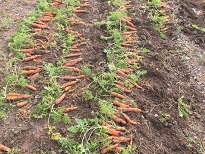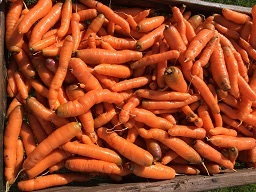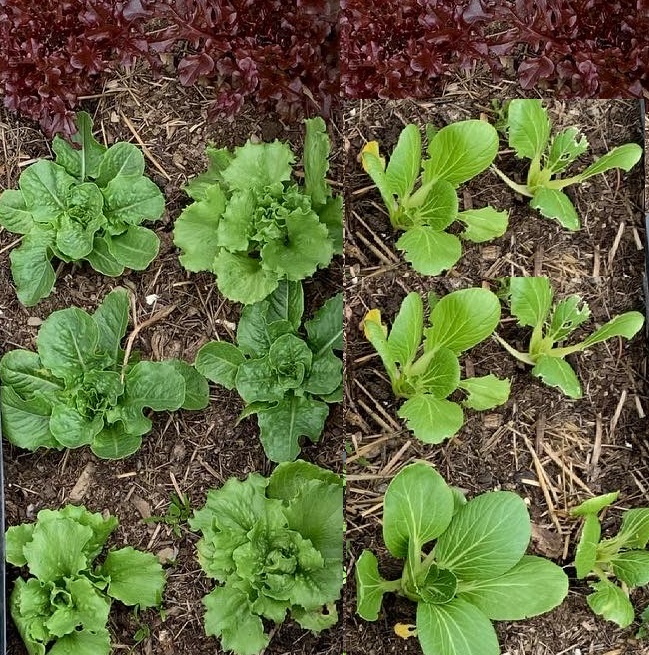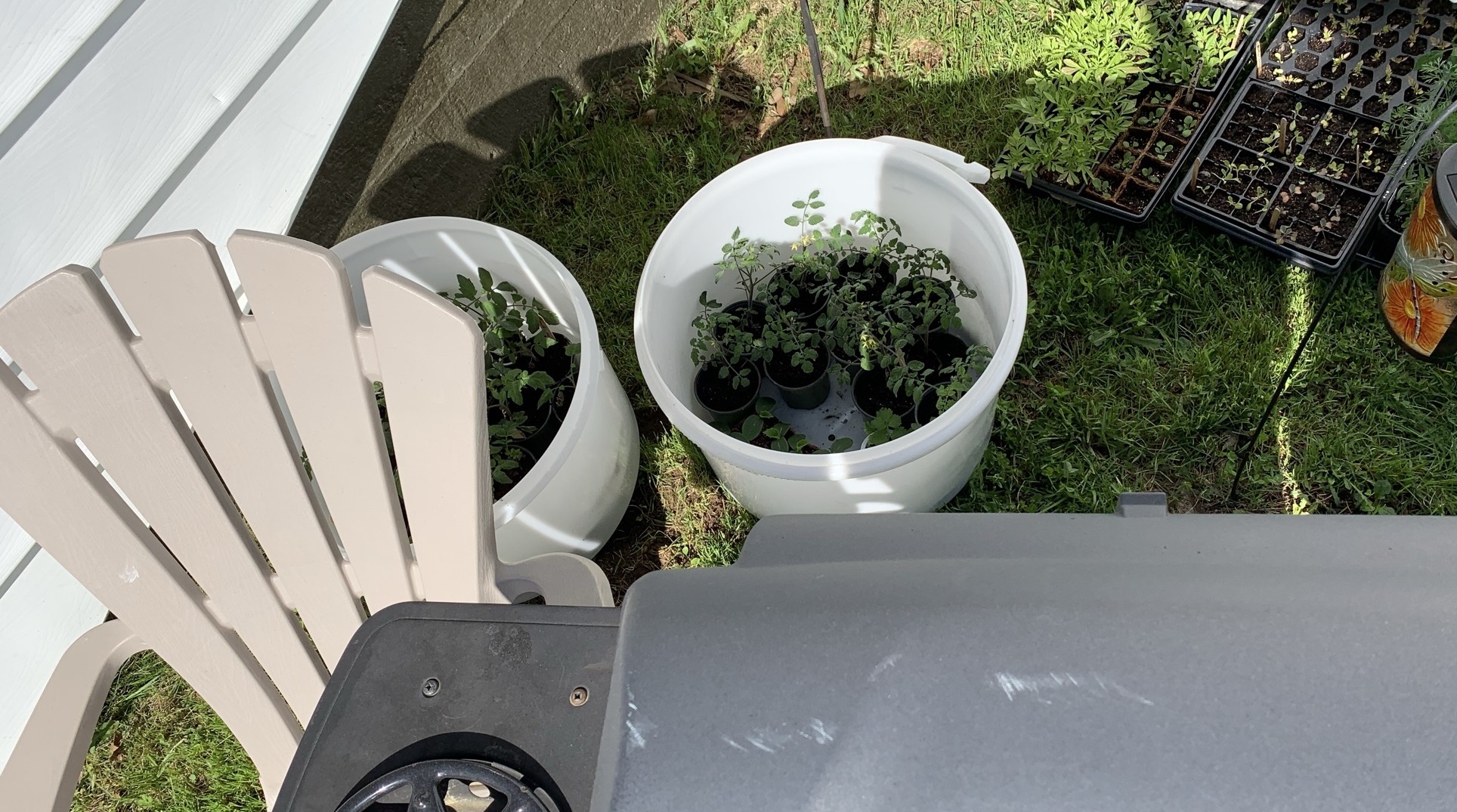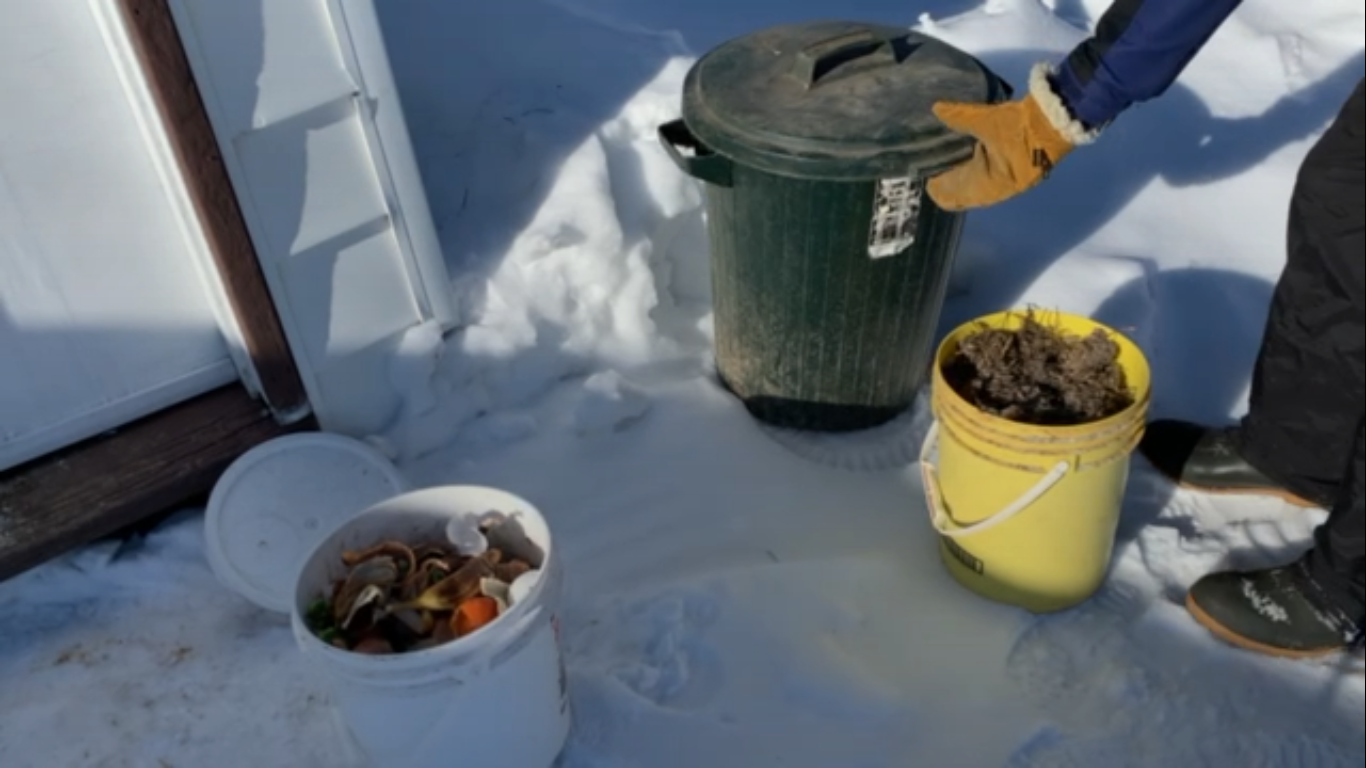With careful vegetable storage,
you can eat your own produce year-round
Even with all the season extension tricks in the book, long term vegetable storage is an integral part ensuring a year-round supply of your own produce in zone 3b.
All spring and summer, of course, you want to eat your veggies straight from the garden, watching carefully so you can harvest each crop at the optimum time. Long-term vegetable storage is neither feasible nor desirable during the summer months with your baby carrots, new potatoes, and freshly cut spinach. You haven’t eaten good corn until you’ve taken it straight from the garden to the already boiling pot. Peas need to be monitored and picked every two days. String beans are good for three, or at the most four days between pickings.
All summer long, the timing is critical. You need to harvest each crop at precisely the right moment for maximum taste.
Inevitably though, autumn comes (too early in Zone 3b). Now we’re down to our winter storage crops and we can relax a bit more but not totally yet. Even though the winter storage crops are not as time-sensitive, we still need to be calendar-aware if we are going to be successful at vegetable storage.
Winter Squash
 Squash harvested after a killing frost
Squash harvested after a killing frostWinter squash are best left attached to the vine until the fruit has turned a dark, solid color and the rind is hard. However, if you’re “blessed” with a colder climate and a short growing season, pay attention to the weather forecast. A light frost will not damage the squash themselves, even though it decimates the foliage. However, if an extra hard frost is predicted, you’ll want to harvest your squash, even if they’re not quite mature. Cut the stem off carefully, leaving at least two inches of stem attached to the fruit.
Once the squash are picked, you’ll want to make sure they are clean and then spread them out on a rack for 10 to 14 days in a warm place to let them cure. Wire mesh is ideal because they need lots of air circulation.
After 10 to 14 days, move the squash to a cool, dry place for winter storage, ideally 50 to 55 degrees Fahrenheit, with a relative humidity of 50 to 70 percent. Make sure they are on shelves and not on the floor.
Onions
Onions can withstand a fair amount of frost but should not be left too late into the fall. Pull the onions and spread them out on a screen in a warm, breezy place. Let the onions cure until the stems dry up, then cut off the stems close to the bulb. Store the onions in a cool place with moderate humidity, ideally hanging in a mesh bag.
When talking about vegetable storage, nothing is more well suited than carrots, beets and rutabagas and similar root crops
Root crops such as carrots, beets, and rutabagas can stay in the ground long after frost hits. (In fact, many people feel that rutabagas need frost to help them mature.) You can leave them in the ground until you’re ready to eat them and they’ll be extra fresh. However in northern climates eventually the time will come, close to freeze up, when even the hardiest veggies will need to be picked. The good news is that late crops store very well.
Once the root crops are picked, trim the plant top completely off but don’t cut into the root. Gently clean the dirt off. If you do use water, make sure that complete drying takes place. (Moisture promotes rot.) Then store your crops as close to freezing as possible at 95 percent humidity. Ideally, they should go in a perforated plastic bag in the crisper drawer of your refrigerator, but you can also store them in a root cellar or cold room in straw, moist sand, or sawdust.
With careful harvesting and vegetable storage procedures, not only will you have the satisfaction of self-sufficiency, but you will also enjoy a taste that cannot be duplicated at the supermarket.
